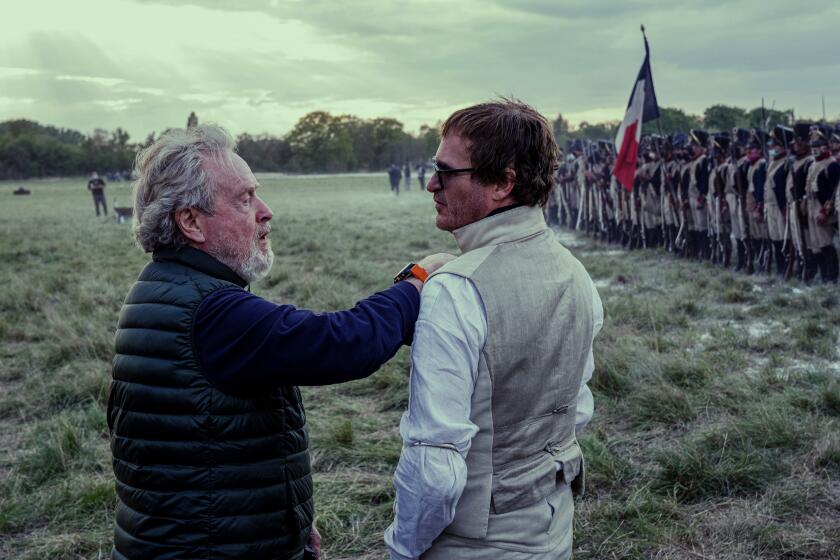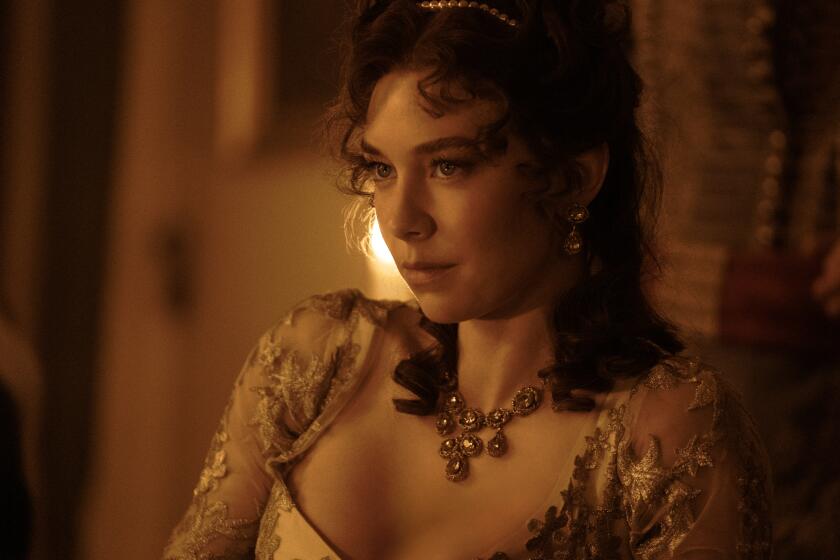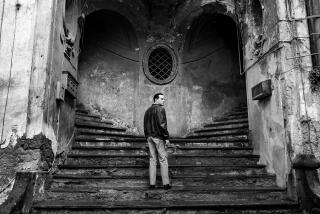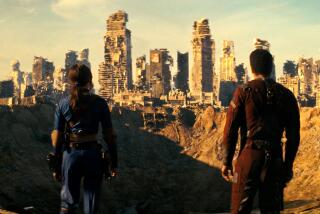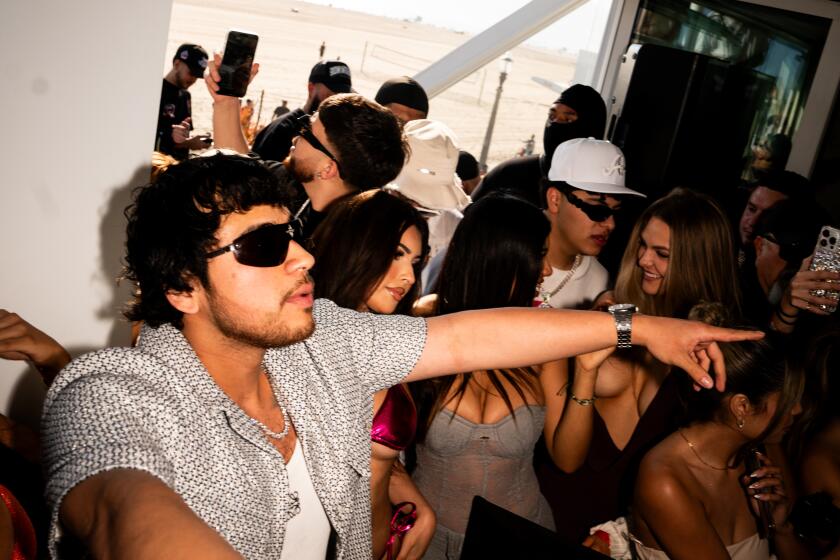The life of ‘Napoleon’ production designer: Build beautiful sets and then torch them
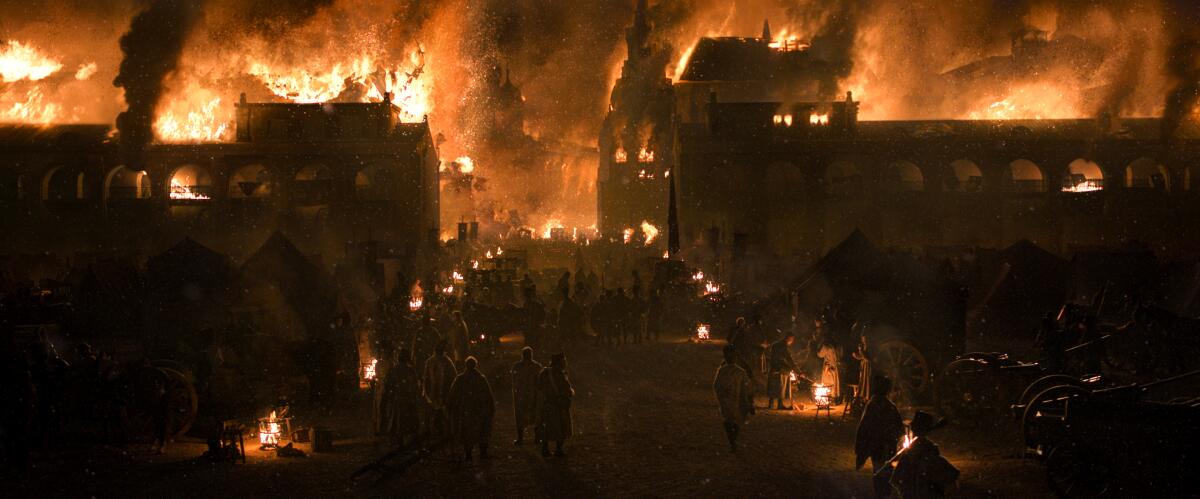
Even by Hollywood’s formidable location-swapping standards, Ridley Scott’s “Napoleon” deserves some kind of medal for cinematic sleight-of-hand. The French conqueror never invaded Britain, whereas the makers of “Napoleon” largely never left Britain. Scott’s longtime production designer, Arthur Max, oversaw the effort to reimagine French chateaus, Paris riots, carnage in the Czech Republic (formerly Moravia), Russian conquests and Dutch battlefields all on UK turf.
Teamed with set decorator Elli Griff, Max took his visual cues from Scott’s meticulous “Ridleygram” storyboards and frequent “War Room” meetings. “We had big physical models in the room, landscaping photography, miniature people, storyboards blown up big, samples of fabrics and costumes and weaponry and artillery,” says Max, a three-time Oscar nominee who worked as an architect before shifting into production design. “There’s no limit to the amount of detail that we’d go into.”
At a time when there’s greater sensitivity around elevating stories about women, the director has long focused on intelligent, nuanced female characters.
Speaking from Malta, where he’s reuniting with Scott on his “Gladiator” sequel, Max explains how he helped relocate the Napoleonic Wars from continental Europe to (mostly) British soil.
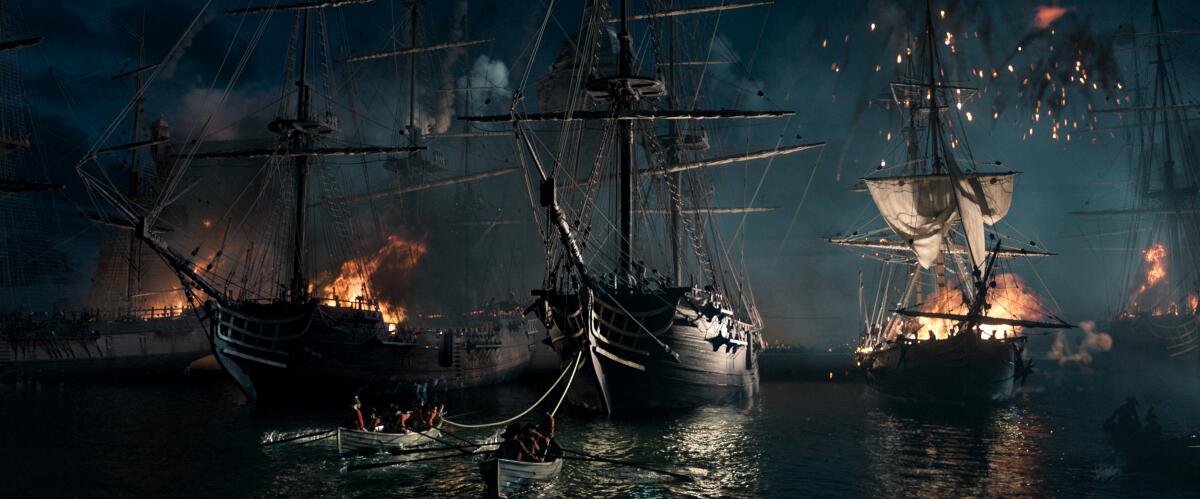
Napoleon’s first big victory in Toulon
In 1793, Napoleon successfully attacks the French seaport fortress that had been blockaded for months by the British navy. “We looked at Malta, where we’d made ‘Gladiator’ at Fort Ricasoli at the mouth of the Grand Harbor of Valletta,” Max says. “There’s a sequence of island peninsulas that surround the harbor with forts on all of them, and we thought that made for rich pickings as far as the nautical side of the movie.” To populate Toulon’s coastal waters with cannon-firing “tall ships,” Max used the Étoile du Roy. “It’s an accurate replica of an 18th-century French frigate and one of the few things that’s actually French in the film,” he says. “It was photographed from different angles, in different weather, repainted in different color schemes, re-rigged, re-dressed with different flags. That’s how our one ship became many ships, both French and English, and it also goes to the sophistication of modern visual effects.”
With her cryptic, beguiling performance, she holds the movie’s power, and filmmaker Ridley Scott adds to a pantheon that includes ‘Alien’ and ‘Thelma & Louise.’
The Royalist insurrection
Napoleon in 1795 orders his troops to shoot Royalist civilians rebelling against the post-monarchist “Directorate” regime. The sequence was filmed at an undisclosed London-area location. “That whole avenue in Paris where the crowd’s charging toward the cannons was [originally] a field of grass,” Max says. “Elaborate steps were taken by our greens department with membranes, rubber matting and fake stone paving. It was quite bloody in [historical] fact, because grapeshot was used, which is like a very large-scale shotgun. It just eviscerated the crowd.”
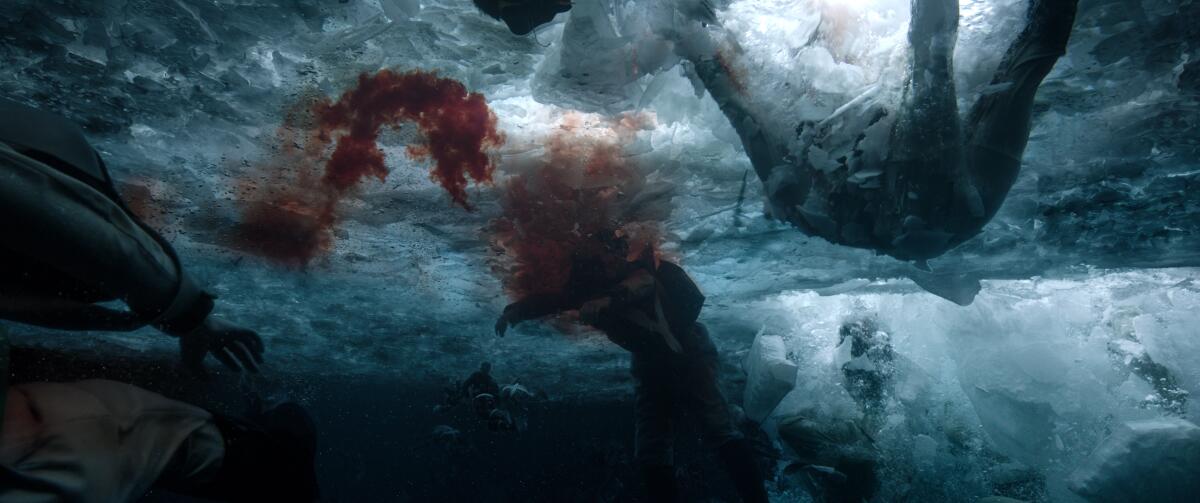
Austerlitz and the frozen lake debacle
Napoleon outsmarts the Austrian army in 1805 by luring fighters onto a snow-covered frozen lake. Cannonballs shatter the ice, causing soldiers to drown in frigid water. Scott’s initial concept was inspired by mountain lakes in Austria, but, Max says, “we ended up in a small valley outside of London that we’d also used in ‘Gladiator.’ Napoleon’s tent was set up in the pine forest on the same hilltop where we shot Marcus Aurelius’ camp.” The frozen lake portion of the sequence was filmed separately at an airfield near London. “We excavated an enormous tank in the middle of this airfield for where the army fell through the ice,” Max explains “We used a hydraulic mechanical collapsing ice field augmented with a physical water tank filmed by underwater cameras. It wasn’t two miles across the lake or whatever, it was about 200 yards, but with clever photography and lensing you create the illusion of the sort of scale you need, in combination with visual effects and extensions.”
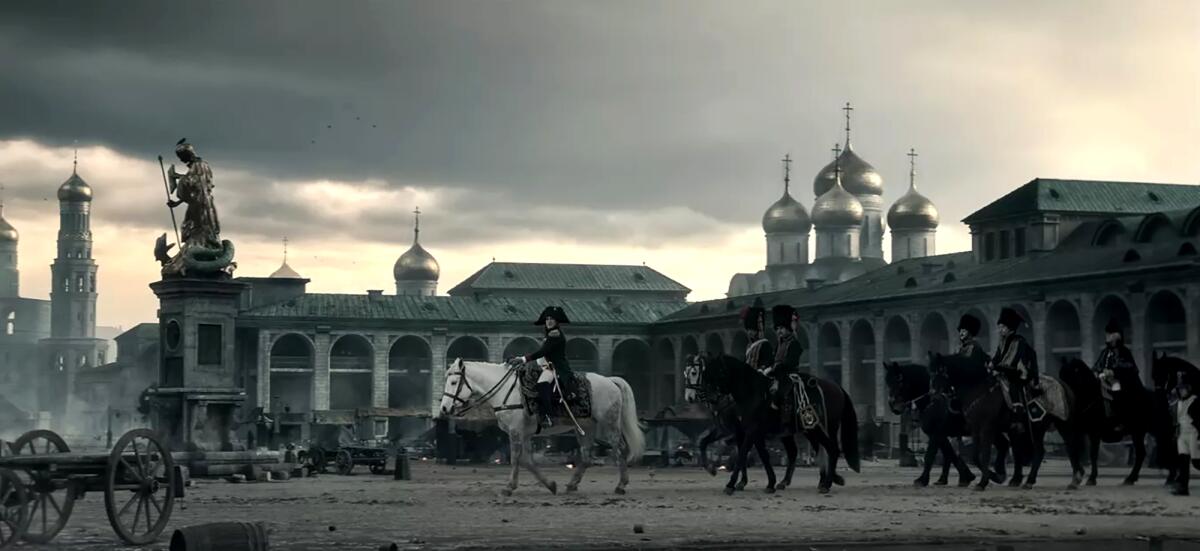
The brutal Russian winter
The filmmakers’ depiction of Napoleon’s disastrous invasion of Russia in 1812 includes a deserted Moscow, shot in Oxfordshire’s Blenheim Palace, and war-ravaged villages purpose-built in rural England. “It’s all done in horrible conditions of wind and rain, and it’s all got to be exquisitely beautiful and then it’s all trampled upon by everyone and set on fire, which was slightly out of control because of high winds and real wooden sets built with infinite care,” Max says. “This is all part of the Ridley Scott universe, and there’s nothing else like it these days. It’s good old-fashioned filmmaking meets 21st-century technology.”
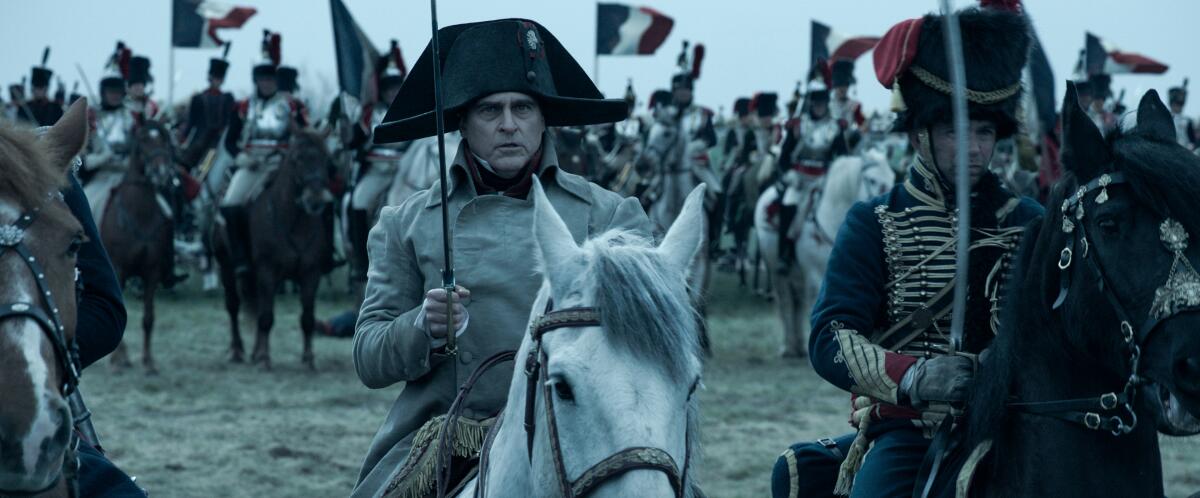
Waterloo on a horse farm
“Napoleon” culminates with the 1815 battle of Waterloo, when thousands of English soldiers famously defeat Napoleon’s equally massive army. Max studied Rod Steiger’s 1970 “Waterloo” movie, then set out to find a plot of land in England that could stand in for Belgium’s legendarily bloody killing floor. Max and his team eventually found a horse breeding farm whose owner happened to be a Ridley Scott fan. “He was happy for us to dig up his field and take down the fences,” Max recalls. “It’s a beautiful valley with lovely rolling hills high above the plains, and it had just enough distance between the two hills for infantry and cavalry to encounter each other without being too far or too close.”
The perfect “Waterloo” site materialized only after numerous non-starters, but Max says he savors the thrill of the hunt. “Part of the joy of my job is tromping around muddy fields in the rain, day after day, with producers breathing down my neck, telling me why it’s not a good idea to use this particular field, or the DP saying it doesn’t work for him, or the location manager telling me, ‘You know, this belongs to six different owners,’ so that’s a problem. It goes on and on. But I like being in the outdoors and building locations rather than being confined to a backlot with not enough scope or green screen around to give it the scale you need.”
More to Read
From the Oscars to the Emmys.
Get the Envelope newsletter for exclusive awards season coverage, behind-the-scenes stories from the Envelope podcast and columnist Glenn Whipp’s must-read analysis.
You may occasionally receive promotional content from the Los Angeles Times.
